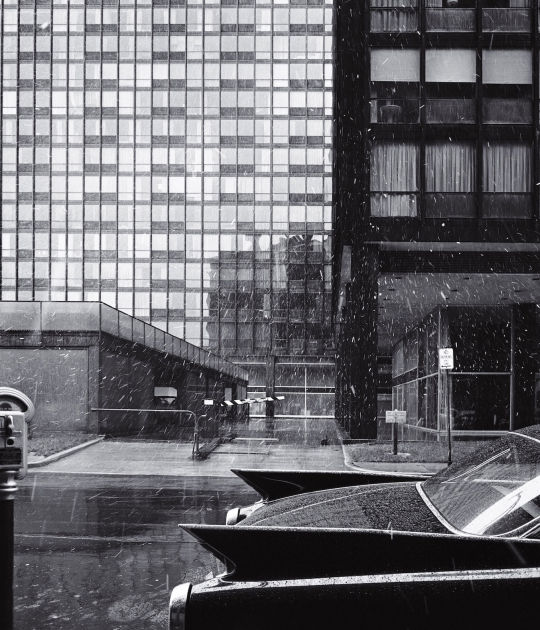Berenice Abbott (Springfield, Ohio, 1898 - Monson, Maine, 1991) was one of the most prominent American photographers of the first half of the 20th century, author of an urban and human radiography of the city of skyscrapers, New York.
Her portraits of contemporary artists and intellectuals and her vision of the transformations of the city of New York constitute an exceptional portrait of the modernity of the first half of the 20th century.
The idea of modernity invades all of Abbott's work, from her portraits of the most avant-garde artists and intellectuals of the moment to her scientific-themed photographs (in which she captures the results of various phenomena and experiments) through her amazing views of the city from New York. It is an idea that is in turn a reflection of the modernity of the artist herself, with her avant-garde and audacious character, which allowed her to live her sexuality freely with her partner, the art critic Elizabeth McCausland, with whom she would live for thirty years years.
The Mapfre Foundation exhibits in Barcelona 200 images (all vintage copies) of this photographer who captured the transformation of New York in the thirties and made impressive portraits.
The exhibition
The exhibition, structured in three thematic sections, covers her career through almost two hundred period photographs. In addition, eleven photographs by Eugène Atget, which were authored by Abbott herself at the end of the 1950s, are exposed in dialogue with her works.
The journey begins with the Portraits section, in which the images of the most groundbreaking characters of the time are integrated. Mainly, it portrays the life project of a group of which she is a part: that of the "new women", willing to live outside the conventions to safeguard their freedom. In the example of these portraits is the image of Janet Flanner in Paris.
In Cities, second group of photographs, Abbott's dazzling portrayal of New York during the 1930s is gathered. Before her goal, New York becomes a living being, an extraordinary character who discovers himself to his visitors with his Shocking skyscrapers, the bustle and its shop windows. She develops this project independently until, in 1935, she manages to finance it with the help of the Federal Art Project. These images are published in 1939 with the title Changing New York, achieving a great success of criticism and sales.
The last part of the exhibition concentrates her photographs of experiments and scientific phenomena. Abbott began working on them in the late 1950s when she was part of the Physical Science Study Committee of the Massachusetts Institute of Technology. These photographs demonstrate, once again, the duality that runs through Abbott's work. Images that document physical phenomena but at the same time show the exquisite imagination and creativity of the photographer.
The exhibition's curator, Estrella de Diego, professor of Contemporary Art at the Complutense University of Madrid and member of the Royal Academy of Fine Arts of San Fernando, and Nadia Arroyo, Director of Culture of the Foundation, participated in the presentation of the exhibition. MAPFRE.































